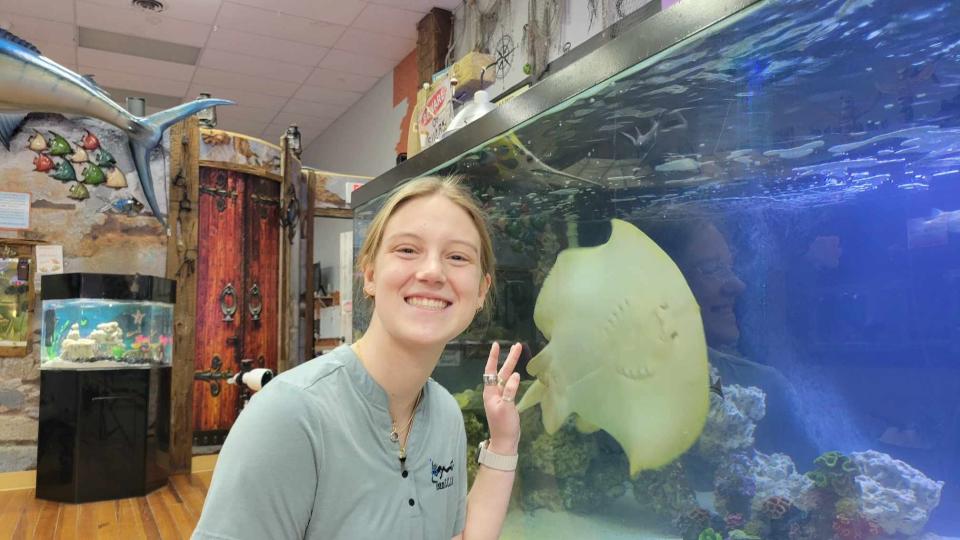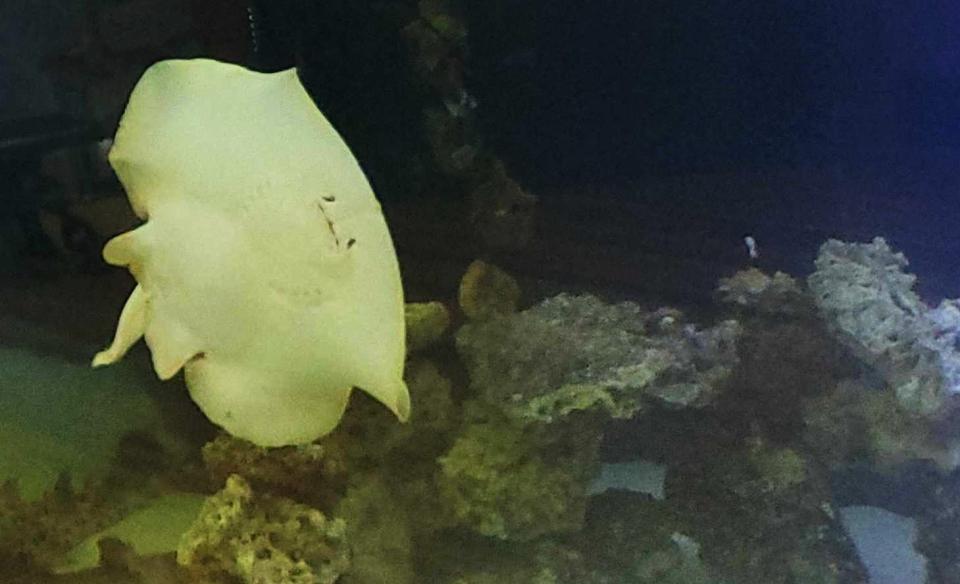Still no 'miracle' birth? What to know about Charlotte the pregnant stingray
Western North Carolina's celebrity stingray Charlotte is making a splash in local and national news with her mysterious pregnancy.
Charlotte has lived at ECCO Aquarium and Shark Lab in Hendersonville, N.C., for eight years. ECCO revealed in February that Charlotte was not only pregnant, but had become so without any genetic contribution from a male mate.
Here's what to know about stingrays, and America's current favorite stingray, in particular.
More: Hendersonville stingray could be 1st in its species to be pregnant through parthenogenesis
More: Pregnant stingray Charlotte gets another ultrasound as world waits for 'miracle' birth
How did Charlotte the stingray become pregnant?
"Parthenogenetic pregnancy" is the development of a sex cell without fertilization. Parthenogenesis can occur in lower plants such as mosses and lichens, invertebrate animals like wasps and ants and, more rarely, vertebrate animals such as Charlotte. Kinsley Boyette, a member of Team ECCO, previously told Blueridgenow that a parthenogenic embryo was "basically a clone of the mother."
While Charlotte's case is unique, she isn't the first vertebrate animal to undergo parthenogenetic pregnancy in captivity. Thelma, a reticulated python at Louisville Zoo in Kentucky, gave birth to six female offspring in 2014, according to National Geographic. At the Chester Zoo in the UK between 2005-2006, Komodo dragons Sungai and Flora laid 22 and 25 eggs, respectively, without fertilization, the Guardian reported.
So, no, Charlotte was not "impregnated by a shark" as one popular internet joke suggests.

Charlotte the stingray due date: Has Charlotte the stingray given birth?
A recent Instagram post by Team ECCO provided updates, including information on Charlotte's unique pregnancy.
"Charlotte is carrying one pup for sure, see the attached previously posted ultrasound clip," a Team ECCO employee explained in the post. "Charlotte's pregnancy is a unique situation. There is no set precedent on how long a parthenogenetic pregnancy is in this species. Charlotte is the first known documented California round stingray to do parthenogenesis in captivity."
Charlotte's first ultrasound was taken in September 2023. However, aquarium staff has reminded the public that the mom-to-be's case is the first of its kind – meaning her "due date" is simply too unique to predict.
More: Could a shark have impregnated a stingray at a North Carolina aquarium? What one expert says
More: Charlotte the stingray: Ultrasound released, drink created in her honor as fans await birth
How long is a stingray pregnant?
Previous reporting from Blueridgenow said that the average gestation period for stingrays is three to four months, meaning that Charlotte is well over the due date for a typical mother stingray. As mentioned by Team ECCO members, however, there is no known data for parthenogenetic pregnancies.
"We are surveilling them all throughout the night and all throughout the day if we are not here. We are on pup watch," Boyette said in a previous interview with Blueridgenow. "That's also to keep the pups safe. It would be amazing if we capture the birth on video. If she hides behind rocks, we're going to try to get the best clip of it that we can. She will do whatever she wants to do."

Where do stingrays live?
Round stingrays live in the Eastern Pacific, from Humboldt Bay in northern California south to the Gulf of California and Panama City, Panama, according to the Aquarium of the Pacific in Long Beach, California. They prefer sandy or muddy bottoms, but are sometimes found in rocky reef areas. They most commonly inhabit water depths from intertidal to less than 50 feet in depth, but may also be found in water as deep as 300 feet.
What do round stingrays look like?
Round stingrays have smooth, nearly round bodies, with no dorsal fin. They have sturdy tails less than half the length of their bodies ending in a true caudal fin, unlike the thin, whip-like tails of other stingrays, the Aquarium of the Pacific says. Round stingrays vary in color from tan to brown to gray and from plain to spotted or mottled with varying pattern shades giving them a dappled appearance. The underside is a solid whitish or light yellow color.
How big are stingrays?
The largest round ray reported was 22.8 inches in length, according to the Aquarium of the Pacific. Maximum reported weight is around 3 pounds. Most round rays are much smaller than this, with a disc diameter of 10 inches or less.
What do stingrays eat?
Round stingray diets consist mainly of bottom dwelling invertebrates such as worms, shrimp, amphipods, clams and other small mollusks, and small fishes. They have also been observed in the upper water column preying on small fishes, the Aquarium of the Pacific says.
Do stingrays attack people?
Round stingrays are good swimmers, moving by undulating the edges of their oversized pectoral fins and capable of substantial bursts of speed, according to the Aquarium of the Pacific. For camouflage, they cover themselves with mud or sand, leaving only the eyes and spiracles exposed.
They are not aggressive, but prefer safe distance from humans. Females generally stay in the deeper portion of their habitat, moving into the shallow water areas only during breeding season.
How long do stingrays live?
The Aquarium of the Pacific says a stingray's lifespan is estimated to be about 14 years.
Iris Seaton is the trending news reporter for the Asheville Citizen Times, part of the USA TODAY Network. Reach her at [email protected].
This article originally appeared on Asheville Citizen Times: Charlotte the pregnant stingray: no word from Team Ecco
